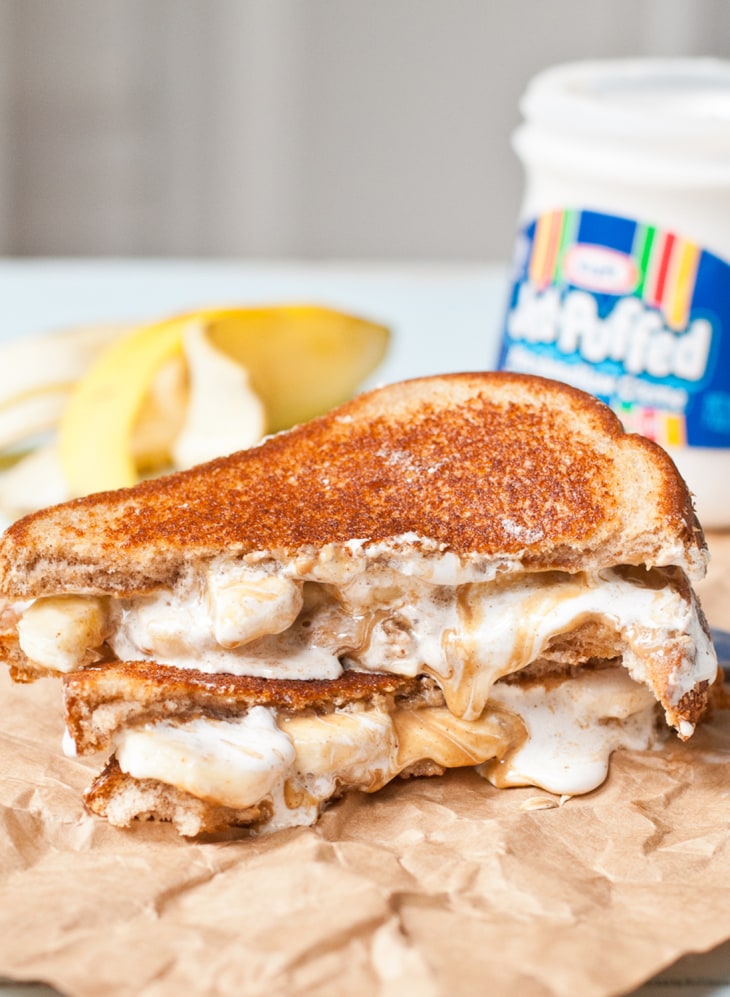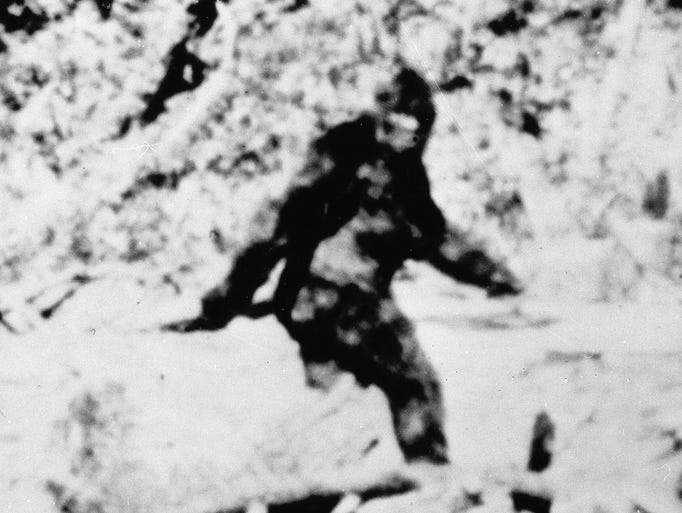-
Posts
18,634 -
Joined
-
Last visited
-
Days Won
88
Content Type
Profiles
Forums
Events
Classifieds
Posts posted by mr.d
-
-
-
Birds of prey star in Shaver
-
Pucker up: 6 reasons the pickle craze is here to stay
 Harald Lueder / Shutterstock
Harald Lueder / ShutterstockTODAY, OCTOBER 31,2014--------In the food world, what
-
9 surprising ways salt can restore your skin and body
WOMEN'S HEALTH, NOVEMBER 1,2014--------Our bodies contain the same concentration of minerals and nutrients as sea water, so it's no wonder that sea salt is a natural ally to balance, protect, and restore the body and skin.
One of the major differences between sea salt and ordinary salt is the mineral content: Sea salt is laden with minerals, including magnesium, calcium, sodium, and potassium, all of which play a key role in our skin's health, function, and cellular communication. When your skin's mineral balance is off-kilter, symptoms such as dryness, dullness, irritation, and blotchiness ensue, especially as the colder, dryer weather sets in. Bringing sea salt from the kitchen into your beauty routine can help balance and improve hydration, strengthen the protective barrier of our skin, and kick-start the cell-to-cell communication signals that slow down with age.
1. Balancing Mask
Both salt and honey have anti-inflammatory properties to soothe skin and calm breakouts and irritation. They also help to balance oil production and retain hydration in the layers of skin where it's needed most.
Try it: Mix two teaspoons sea salt (preferably finely ground) with four teaspoons raw honey to create a spreadable paste. Apply evenly to clean, dry skin, avoiding eye area. Let stand for 10 to 15 minutes. Before rinsing, soak a washcloth in very warm water, and gently wring out. Lay the warm washcloth on your face for 30 seconds. Use your fingers to gently exfoliate in a circular motion while rinsing your skin thoroughly with tepid water. Follow with your usual skin-care routine.
2. Oil-Sapping Facial Toner
Salt helps to cleanse pores deeply, balance oil production and thwart bacteria that can instigate breakouts and acne.
Try it: Mix one teaspoon sea salt with four ounces of warm water in small spray bottle until salt is dissolved. Mist on clean, dry skin, avoiding eyes. Use daily or twice daily.
3. Softening Body Scrub
Salt is a gentle natural exfoliate that sloughs off dead skin. It also has minerals to soften skin and restore hydration.
Try it: Mix a quarter-cup salt and a half-cup olive oil or softened coconut oil into a thick paste. If desired, add 10 drops of your favorite essential oil. Apply in the shower with a washcloth, loofah, or the palms of your hands, gently scrubbing your skin in a circular motion.
4. Rejuvenating Scrub
Salt is a skin-softening exfoliant that restores skin. Aloe vera hydrates, heals, and aids skin cell turnover, while lavender is a natural antiseptic that increases circulation.
Try it: Mix together a half-cup salt, a quarter-cup pure aloe vera juice or gel, a quarter-cup oil (your choice!), one tablespoon dried lavender flowers, and 10 drops essential oil of lavender. The resulting mixture should form a thick paste; if it's too dry, add a few extra drops of oil. Apply in the shower with a washcloth, loofah, or the palms of your hands, gently scrubbing your skin in a circular motion.
5. Relaxing Salt Bath
Salt absorbs dirt, grime, and toxins and cleanses your skin's pores deeply. Salt's mineral content helps restore the protective barrier in skin and helps it hold hydration. You may notice that your skin won't wrinkle or prune after a good, long soak in salted water, which is evidence that a salt bath helps your skin retain its moisture. The magnesium in sea salt may also help reduce water retention (i.e., bloating) in the body.
Try it: Add one-third cup salt to a tub filled with warm water, and swish to dissolve the salt. Soak for 15 to 30 minutes.
6. Anti-Dandruff Scalp Treatment
Salt helps loosen and remove existing flakes while stimulating circulation for a healthy scalp. The ingredient also absorbs excess oil and moisture to prevent fungal growth and inhibit the root of dandruff.
Try it: Part your hair a few times, and sprinkle one to two teaspoons of salt on your scalp. Using wet fingers, massage your scalp gently and thoroughly for 10 to 15 minutes (if you can recruit someone to do this for you, it is very relaxing!). Wash and condition your hair with your favorite products. The results will be immediate.
7. Teeth Whitener
Salt and baking soda are both gentle abrasives that will help remove stains and brighten teeth. Salt also contains a natural source of fluoride, which is a bonus for your teeth and gums.
Try it: Mix one teaspoon salt and two teaspoons baking powder. Dip a damp toothbrush in the mixture, and brush teeth normally. If the taste is too intense, try putting a dab of toothpaste on the brush before dipping it in the mixture.
8. Natural Mouth Wash
Salt acts as a disinfectant to kill the bacteria that can cause bad breath and gingivitis.
Try it: Mix together a half-teaspoon salt, a half-teaspoon baking soda, and a quarter-cup water until the salt dissolves. Swish the solution around in your mouth and between teeth. Spit, then rinse.
9. Nail Brightening Treatment
Salt softens cuticles and skin and strengthens nails. Baking soda and lemon work to reduce yellowing and stains for brighter, healthier-looking nails.
Try it: Mix one teaspoon salt, one teaspoon baking soda, one teaspoon lemon juice, and a half-cup warm water in a small bowl. Soak nails in the solution for 10 minutes, then scrub with a soft brush. Rinse hands, and moisturize. http://www.today.com/health/9-surprising-ways-salt-can-restore-your-skin-body-1D80257289
-
A 3-cent tooth whitener and 7 other surprising uses for hydrogen peroxide
TODAY, OCTOBER 30,2014--------There
-
Bigfoot: If it exists, here's where to find it
The Gulf Coast Bigfoot Research Organization (GCBRO) is convinced Bigfoot is real, and exists in large numbers (up to 30,000).Associated Press
USA TODAY, OCTOBER 24,2014----------The Gulf Coast Bigfoot Research Organization (GCBRO) is convinced that not only is there a Bigfoot, but there are in fact bigfeet scattered across the countryside, even as many as 30,000 creatures (a number they admit is a "wild guess") from the Pacific Northwest and across the South from Texas to Georgia.
The specimens in the Northwest are believed to be of the Sasquatch variety, mainly loners that avoid humans, while their cousins in the South, Bigfoot, are believed to be more aggressive and don't necessarily shy away from human contact. The GCBRO's controversial goal is to kill an adult male Bigfoot for scientific study.
The efforts of the GCBRO will be featured in a special called "Killing Bigfoot", airing on Destination America on October 24th. I recently spoke with Jim Landsdale, co-founder of the GCBRO, who made a point of telling me that Bigfoot hunts are not just guys firing shotguns and drinking beer. The hunts are quite regimented, "military style," with emphasis on gun safety. They are also careful to stay off private property or secure permission from the landowner ahead of time. Hunts can last anywhere from a week to 20 days, exploring paths and following tracks day and night.
During our conversation, Landsdale shared some of the best places in America to spot Bigfoot, including the following:
"Monster Central"
The so-called "Monster Central," about 1500 acres, 30 miles south of Shreveport Louisiana, is actually on Landsdale's property, where he first laid eyes on a Bigfoot 20 years ago and where the GCBRO does many of their hunts. They've most recently spotted a female bigfoot along with her child, though since the GCBRO team only wants to harvest a male specimen, they didn't pursue. Landsdale says these are sharp, corn-feeding creatures, but they can also be fearless. When the creatures allegedly started killing Landsdale's pets, he resolved to kill one for study.
Northwest Louisiana
The Toledo Bend Reservoir, on the Sabine River between Texas and Louisiana near the city of Natchitoches, is a prime area for Bigfoot sightings, sometimes generating two reports a month. The GCBRO has seen "packs" of Bigfoot here, roaming across four or five parishes.
East Texas
Landsdale reports there is heavy activity continuing along the Sabine River through Greg, Harrison and Panola counties in Texas. Five months ago a GCBRO group saw a total of five young creatures scampering around the area in a single day.
Southeast Oklahoma
The Kiamichi Mountains are a hotbed of Bigfoot activity. A GCBRO member that owns 40 acres in the area claims to routinely get Bigfoot visits around his cabin. A word of caution: The creatures in this area are said to be especially aggressive.
Mississippi
The GCBRO says they receive anywhere from three to five reports a week from up and down the river and its tributaries in the Mississippi Wildlife Management Area (WMA). Other times, an entire month will pass without a report. Based on this and other evidence, the group has concluded that Bigfoot individuals and families of up to 10 creatures are probably hunting in geographic loops on a roughly 72 hour cycle, originating from their bedding area, moving to various hunting grounds, and back to their bedding area. As with much of the South, it's theorized that Bigfoot prefers this area for the climate and abundance of vegetation and animals.
Arkansas
This area is best known for the Fouke Monster, aka "Southern Sasquatch," near the town of Fouke in Miller County, Arkansas. A book and a number of films have been made, based on this legend. Fouke was the first known variety of sasquatch, with only three toes (Bigfoot species can have three, four or five toes), and are aggressive, prone to killing pigs and terrorizing people. Landsdale believes the three toed creatures may be inbreeding, making them more aggressive than their four and five-toed cousins.
Georgia
The Appalachian Mountains in the northwest part of the state, particularly near the Benton-MacKaye Trail off Highway 515, are said to get sightings four or five times a month. Though this is one of the hottest parts of Georgia, caves provide refuge from the heat and there is abundant vegetation and animals.
Washington State
The west coastal areas of Washington State have several reports of sightings, including Kitsap County, which has had quite a few sightings in 2014 alone, as well as Bumping Lake and Skooum Valley. The coast is said to be preferred by these sasquatch for the climate, as it's never really hot or cold, and there's plenty of available vegetation and meat. Again, the sasquatch in this region tend to be less aggressive, more likely to be loners, and stay away from people.
Northern California
Bluff Creek is famous for the hotly debated Patterson film, showing footage of "Patty" in 1967. Since then, male tracks have been found in the snow in the area. Caves provide protection from the elements between hunts, which persist all winter, as Sasquatch don't hibernate. SEE SLIDES; http://www.usatoday.com/experience/america/best-of-lists/bigfoot-sighting-across-america/17679793/
-
-
 GWENN DUBOURTHOUMIEU / AFP - Getty Images, file
GWENN DUBOURTHOUMIEU / AFP - Getty Images, file4 hours
Reports of Witchcraft-Related Child Abuse On the Rise in LondonLONDON, OCTOBER 11,2014------
-
11 human foods dogs can eat and 5 they shouldn'tWhether you're tempted to feed your pet the occasional table scrap or simply looking to supplement his doggie diet, here are good foods and bad foods for Fido.

It's OK to give your furry friend a treat from your plate now and then. (Photo: Scott Barron/flickr)
MOTHER NATURE NETWORK, OCTOBER 8,2014-------We know it's best to avoid feeding man's best friend with table scraps, but sometimes those puppy-dog eyes get the best of us and we can't resist slipping them a treat from our plates.But just because a food is good for us doesn't necessarily mean it's safe for dogs.Here's a list of dog-approved people foods, as well as some items you should never share with your canine companion.Keep in mind though that every dog is different, so try these foods in small amounts, and if your dog has a reaction to any of them, consult a veterinarian.Do-your-doggie-good foods- Peanut butter: Giving your dog the occasional tablespoon of unsalted peanut butter is a treat you can both enjoy. It's a great source of protein and healthy fats for dogs, and it's a perfect photo opportunity for you.
- Yogurt: High in protein and calcium, plain yogurt is an ideal treat for dogs, especially if your pooch suffers from digestion problems. Make sure you opt for yogurts that don't contain added sugar or artificial sweeteners.
- Oatmeal: Oatmeal is a good source of fiber, making it great for dogs with bowel irregularity issues, and it's also safe for dogs with wheat allergies. Before serving it to your pet, cook the oatmeal and don't add any sugar.
- Chicken: If your dog requires extra protein in his diet, cooked, unseasoned chicken is an easy addition to his regular food. It also makes a good meal replacement if you're out of dog food.
- Salmon: Dogs can benefit from omega 3 fatty acids too, so slip some cooked salmon into the food bowl for a healthier, shinier coat.
- Broccoli: This vitamin-rich vegetable can be a great occasional nutrition boost for dogs. However, it shouldn't make up more than 10 percent of a dog's diet as it could cause gastrointestinal irritation.
- Pumpkin: You can serve your dog pumpkin
-
Bigfoot an alien? UFO meeting mulls possibilitiesPhotos

YOUNGWOOD, Pa., OCTOBER 7,2014 -----
-
It's Fluffernutter Day! Get your marshmallow fluff fix with 5 spins on the classic sammy
Megan O. Steintrager TODAY contributor12 hours ago
 Courtney Rowland / neighborfoodblog.com
Courtney Rowland / neighborfoodblog.comThe fluffernutter
-
He ate what?! 9 foods you should never feed your pet
TODAY PETS, SEPTEMBER 29,2014--------Is it okay to toss your pet a grape? How about the skin you just pulled off your baked chicken? We know it
-
How to tell if your pet is bored
-
Officials Warn Virus Could Sicken, Kill Dogs
 Contagious Virus Killing Dogs in New Jersey
Contagious Virus Killing Dogs in New JerseyTRENTON, NEW JERSEY, SEPTEMBER 20,2014--------Health officials are warning dog owners to be on the lookout for a deadly canine virus that could sicken or kill their pets.
Dozens of dogs have been killed by the canine parvovirus in New Jersey, according to ABC News affiliate WPVI-TV in Philadelphia.
The American Veterinary Medical Association says the virus is highly contagious and can affect all dogs, although puppies and unvaccinated pets are most at risk.
Pet Health: How to Prevent Parvovirus
Does Your Dog Need a Flu Shot?
Do Your Pets Carry Salmonella?
The virus affects a dog's gastrointestinal tract and symptoms can include lethargy, loss of appetite, fever, vomiting and bloody diarrhea.
The virus is spread though dog-to-dog contact or from contaminated surfaces or items.
Trenton Health Officer Jim Brownlee told WPVI-TV that the virus can spread extremely easily in puppies.
"It's not easy to clean up, it's not easy to pick up and so you're stepping in it, animals are stepping in it and that is exactly the way it's transmitted," Brownlee told WPVI-TV.
In worst-case scnearios some dogs have been so sick, that owners have reportedly asked that the animals be euthanized.
"They end up signing their dog over to us as a release and because the dog is very sick we end up having to euthanize the animal," Elaine Thaxton, manager of the Trenton Animal Shelter, told WPVI-TV.
SEE VIDEO; http://abcnews.go.com/US/officials-warn-virus-sicken-kill-dogs/story?id=25648721
-
-
Amish Cole Slaw
ready in:2-5 hrs
serves/makes: 10
ingredients
3 pounds cabbage, shredded
2 white onion, thinly sliced
1 green pepper, halved and sliced thin
1 cup oil
2 cups sugar
1 cup vinegar
2 teaspoons celery seed
1 teaspoon saltdirections
Put shredded cabbage in large bowl. Layer onions and green pepper on top. Boil oil, sugar, vinegar, celery seed and salt for 1 minute. Pour over cabbage mixture.
Let stand at least 2 hours (Best if let sit overnight), then mix well. Put in airtight container. Will last 3 weeks in refrigerator.(For the last 5 years this has been the only way I make now, I leave the celery seed out.. Used to make slaw with Miracle Whip salad dressing ,vinegar and sugar.) Matter of fact have a big bowl of this slaw in refrigerator now
-
-
-
Agriculture Secretary Urges Public to Help Keep Foreign Beetle from Entering Pennsylvania
HARRISBURG, Pa., AUGUST 20,2014 -------
-
Get ready to celebrate National S'mores Day with these recipes for the summer favorite
TODAYAug. 7, 2014 at 4:46 PM ET
Grab some marshmallows and find a campfire
-
One tree, 40 types of fruit
SYRACUSE, NEW YORK, AUGUST 7,2014(CBS/AP)---------Ideas don't grow on trees, until now.
Syracuse University Professor Sam Van Aken is the proud father of a single tree that grows 40 types of fruit. The artist's rendering of his creation is getting attention worldwide, CBS News correspondent Jeff Glor reports.
 Artist rendering of The Tree of 40 FruitsCourtesy of Sam Van Aken
Artist rendering of The Tree of 40 FruitsCourtesy of Sam Van Aken"It's flattering. It's amazing. But yeah, it's overwhelming," Van Aken said.
The art professor grew up on a farm in Pennsylvania. A few years ago, he learned New York's agricultural experiment station -- a 125-year-old institution that preserves and produces fruit -- was going to rip up its stone fruit orchards.
So he set out to find a permanent home for seeds that trace back thousands of years.
"When I started, it was a matter of essentially collapsing an entire orchard down onto one tree. That was the practical application for it."
The result is not an entire orchard in one, but "a couple orchards in one."
 Tree of 40 FruitsCBS News
Tree of 40 FruitsCBS NewsThe tree contains 40 varieties of peaches, apricots, cherries, nectarines and European plums that date back to the 17th and 18th century.
Growing multiple stone fruits, like peaches or plums, on one tree is possible because what Van Aken does, perhaps better than anybody, is graft.
In essence, he tricks a tree into adopting a new limb, or in this case, dozens of them.
The Tree of 40 Fruit has been growing for nine years. Fourteen are installed around the country, most in public places, like Van Aken's at the center of the Syracuse campus -- alive and edible.
The professor says his project has grown beyond expectation.
"There's a pastor in Norfolk, Virginia that did a sermon," he said. "And a big part of the sermon was using The Tree of 40 Fruit as a symbol. And to me, that was amazing that it reached that far."
Van Aken acknowledges the biblical implications of his tree.
"I mean, the tree of life; it's the beginning of a story," he said.
But if nothing else, the tree is pretty fascinating food for thought.
"I saw somewhere on a website where somebody said that the Tree of 40 Fruit will end world hunger," he said. "And it's like, 'No, it won't. Not at all.' But what it can do is, I like to think, that it can lead to that type of thinking."
SEE VIDEO; http://www.cbsnews.com/news/tree-of-40-forty-fruit-sam-van-aken/
-
Were they on Tyler Rd.? Yes, you would not have to look twice to make sure they was legal. The day I saw them did not get a chance to get any pictures.
-
Wood Quarantines Enacted After Second Case of
-
Went to Shaggers Sunday morning around 11:30, just after going through Parker Dam came across at least 5 foot rattlesnake on the road. Turned onto Tyler Rd. had 3 deer run out of a hollow,1 doe and 2 buck both had to be 10 point (plus). At Shaggers did not see any Osprey from boat launch. At parking lot took path to dam all the time watching the area on both sides of path very closely. Only seen one goose and about 5-6 people fishing on the breast of dam. To left of viewing platform way up against shore looked like a goose and about 6 little ones. Then headed to Clearfield.







Pa. Great Dane Gives Birth To 19 Puppies
in Pet Forum
Posted
YORK HAVEN, PA, NOVEMBER 18,2014---------